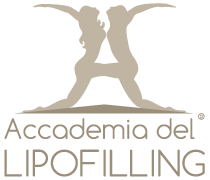In the last decades there was a huge development in the field of biomedical research to find alternative solutions to the use of biological tissue autologous in the treatment of loss of tissue. There were therefore introduced several biological “substitute” which could fix or improve the functionality of a damaged tissue.
Many biomedical products for the skin are based on hyaluronic acid, collagen and other molecules of extracellular matrix of tissues, able to work as a “scaffold” for the tissue.
In our Unit of Plastic Surgery at the I.R.C.C.S. Policlinico San Donato, we performed a study on the use of a dermal inductor based on hyaluronic acid (Hyalomatrix®) in the treatment of hard to heal wounds of the limbs [i]. The properties of hyaluronic acid about the induction of angiogenesis, the stimulus of the collagen deposit and maintenance of homeostasis have long been proven by several studies [ii], [iii], [iv]. Moreover, it seems to have a role in epithelial regeneration and anti-free radical properties.
The product used contains hyaluronic acid in form of benzyl ester (HYAFF), a biopolymer which forms a three-dimensional structure that let fibroblasts to colonization of the wound and, therefore, a regeneration of the damaged tissue. Such ” dermal inducer ” is made of two layers: one is biodegradable, absorbent and completely constituted by HYAFF that represents the contact surface of the product with the wound. The other layer is composed of flexible film, semipermeable and transparent silicone, so as to protect the wound from possible external contaminations.
The 15 treated patients had wounds to limbs of variable size with a surface from 6 cm to 490 cm2 of; 12 case showed tendon exposure and in 2 cases also bone exposure (not more than 2 cm2). All patients were all subjected to surgical cleaning of wounds and application of biomedical product for 15 days.
Post – operation, it proceeded to a serial of clinical controls, combined with the monitoring of inflammatory markers and Swab cultures of wounds. In 40% of cases it was necessary to perform a second application of the product in order to obtain a suitable wound bed. In 67% complete healing occurred spontaneously by re-epithelialization, while in the remaining cases it was necessary to make a closure with a dermo-epidermal graft of partial thickness.
The average healing time was about 27 days (16-60 days).
The quality of the regenerated skin was rated in good or very good 80% of cases. Finally, in one case there was a bacterial superinfection which delayed the epithelialization process.
Analyzing our series, we can say that the dermal substitutes in the treatment of wounds, even hard to heal, of the limbs is a reconstructive opportunity, simpler and less impact for the patient than using flaps and / or grafts: shorter interventions, absence of donor areas, absence of morbidity of the donor areas, easier post-operative course. In all patients, the functional result was satisfying.
Finally, the presence of only one case of infection shows the useful of silicone barrier against bacterial colonization from the external environment.
Prof. Luca Vaienti, Dott. Andrea Marchesi
_______________________________________________________________________________________
Bibliografia
[i] Vaienti L, Marchesi A, Palitta G, Gazzola R, Parodi PC, Leone F. Limb trauma: the use of an advanced wound care device in the treatment of full-thickness wounds. Strategies Trauma Limb Reconstr. 2013 Aug;8(2):111-5.
[ii] Campoccia D, Doherty P, Radice M, Brun P, Abatangelo G, Williams DF (1998) Semisynthetic resorbable materials from hyaluronan esterification. Biomaterials 19:2101
[iii] West DC, Hampson IN, Arnold F, Kumar S (1985) Angiogenesis induced by degradation products of hyaluronic acid. Science 228:1324
[iv] Rooney P, Kumar S (1993) Inverse relationship between hyaluronan and collagens in development and angiogenesis. Differentiation 54:1
